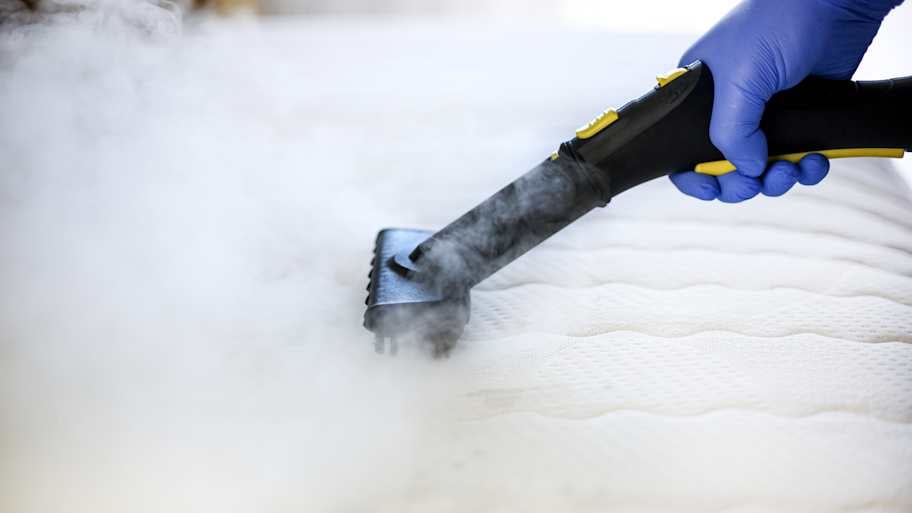
It’s important to know bed bug treatment costs if you have an infestation. Our guide covers different treatment methods and cost factors to eliminate these pests.
It’s time to raise the temperature


Heat treatments are one of the most effective ways to eliminate bed bugs.
The temperature needs to be over 119 degrees Fahrenheit to be lethal.
Heat treatments are more effective than cold treatments.
Heat treatments must be administered by a pest control professional due to the highly technical use of high heats.
If you woke up covered in itchy red bumps or saw bugs crawling in the crevice of your mattress, you probably have a bed bug infestation.
Heat treatments for bed bugs are one of the most effective ways to eradicate these pests. Let’s explore the details of heat treatment for bed bugs, including types, pros and cons, and when to hire an exterminator.
Heat treatments for bed bugs consist of using methods and specialized equipment to raise the temperature to a lethal level of 119 to 125 degrees Fahrenheit for a sustained period of time, usually several hours. Adult bed bugs and their eggs are unable to live through these temperatures.
The heat can penetrate into the mattresses and other areas they hide, making it one of the most effective methods for ridding these pests. In some cases, a single treatment can be enough to eliminate bed bugs. However, if the infestation is severe, it may take more treatments or a combination of heat and chemicals.

There are a few techniques that professionals use to get rid of these sneaky pests. The type of method to implement depends on the severity of the infestation, so it’s essential to consult a bed bug pro.
Here are the most common types of heat treatments for bed bugs:
This method involves using commercial steamers to kill bed bugs by targeting specific infested areas, such as the creases of mattresses, upholstery, baseboards, and other areas. The steam must be applied slowly and at temperatures of 160 to 180 degrees to be effective.
Professionals set up different types of heaters and chambers to treat furniture, clothing, bedding, and more. This method is best if the bed bugs are limited to specific spots, but it’s not recommended for severe infestations.
In this process, pest control specialists use specialized equipment to raise the temperature in the entire room to ensure all the bed bugs and eggs are destroyed. Air movers circulate the air throughout the room, which minimizes the potential for cold spots.
Heat treatments are one of the best non-toxic ways to stop these pests immediately. However, it’s best to weigh the pros and cons of any treatment because these resilient pests can be tricky to get rid of. Here are the main pros and cons to help you decide which method is best:
Natural and Eco-Friendly: Using high heat rather than pesticides is an environmentally friendly approach to evicting these persistent pests from your house.
Highly Effective: Whole-room heat treatments can be very effective, and if done correctly by a professional, a single treatment can wipe out the infestation.
Safer than Insecticides: Heat treatments for bed bugs are safer than chemical treatments. According to the Institute for Functional Medicine, pesticides can potentially cause short-term and long-term health risks, such as “elevated cancer risks and disruption to the body’s metabolic functioning.”
Cost: You will need to hire a pest control professional, which can be expensive depending on the square footage you need to treat. Bed bug extermination can cost anywhere from $1,000 to $4,000, depending on the type of treatment and severity of the infestation.
Potential Damage to Items: High temperatures can be dangerous for living things like pets and plants and can damage certain items, such as plastic and electronics. It’s crucial to prepare the area before professionals apply heat treatment.
Cold treatment involves exposing bed bugs to freezing temperatures below 0 degrees Fahrenheit for an extended period of time, which can be days. This method is best for small items and furniture and not for treating whole rooms.
Heat treatment is more effective for large areas and severe infestations. If you notice large amounts of bed bugs in your home, then heat treatment is going to be much more effective.
You will need to hire a professional pest control company near you to tackle this heat-treatment task. While you can attempt DIY steam treatment, it’s best to work with a pro who has the skills, tools, and knowledge to ensure they wipe out the infestation. Consult a pest control professional to discuss your options, including getting an estimate for your specific infestation issue.
From average costs to expert advice, get all the answers you need to get your job done.

It’s important to know bed bug treatment costs if you have an infestation. Our guide covers different treatment methods and cost factors to eliminate these pests.

If you discover a wasp nest near your home, you’ll want to remove it ASAP. Learn wasp nest removal cost factors in this guide.

Scorpion removal costs vary based on home size, infestation severity, and treatment method. Learn what to expect and how to keep your home scorpion-free.

Learn the signs of a house centipede infestation and how to prevent these multi-legged creepy crawlers from turning the damp spaces in your home into theirs.

There's no one simple trick for getting rid of fleas in your house. But when you come at them from all angles, it's easy to send fleas packing for good.

Ticks are often mistaken for a variety of different beetles. Learn the key differences between a tick versus a beetle so you can respond appropriately.